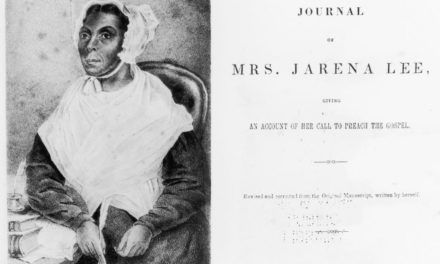
I once dreamed of joining an organization that was actively fighting white supremacy both within and on the outside. I was hopeful to make this dream a reality when I joined an organization spearheaded by my mentor, a force of a Black woman, who I thought believed in this same vision.
When I first started full-time with this organization, I felt myself release a breath. Most of my professional career until that point had been in higher education, one of the most pervasive perpetrators of white supremacy culture. I felt a sense of safety as I was enveloped in an environment of all women of color. I felt seen and affirmed in a way that I didn’t think was possible.
I’m not sure when my dreams became a nightmare; suddenly I was overworked more than I had ever been before. I felt grateful for this, though, as I was serving a higher purpose in a mission-driven organization that I thought valued me as a contributor like never before. I felt safe enough to advocate for myself and my needs, and I started noticing that maybe I wasn’t so safe here after all. I felt as if this original promise of being seen, heard, and supported betrayed me.
White Supremacy Culture
A few years ago, a colleague introduced to me a resource curated by Tema Okun about the characteristics of white supremacy culture. There are 14 characteristics:
- Worship of the written word
- Belief in one way
- Power hoarding
- Defensiveness
- Fear of open conflict
- Quantity of quality
- Perfectionism
- Sense of urgency
- Either/or thinking
- Right to comfort
- Individualism
- Progress is more
- Paternalism
- Objectivity
As one of my favorite TikTokers, 5hahem, did a series teaching about these characteristics, something started to click with my own experience. For so long I felt like I was questioning my reality. How could everything be okay if things were not okay? I soon realized that just because I was part of a Black organization, it didn’t mean that this organization was immune to the infiltration of white supremacy culture.
I want to share my experience as a warning to other Black or BIPOC-led organizations. Working for this organization took a great toll on my mental health due to several characteristics of white supremacy embedded in its culture. I am not writing this out of bitterness or spite, but I believe in dismantling white supremacy in all our systems, and I want the best for BIPOC employees everywhere. Out of respect, I won’t share the name of this organization I worked for because I still believe in the work they do for their community.
I understand capitalism and white supremacy are intertwined, and it can be difficult to run an organization to survive in this climate. All we can do is be aware of how we show up and how it aligns with our values. Hopefully, all leaders can ingest this and reflect on their own leadership practices.
Worship of the Written Word and Belief in One Way
In our expanding organization, there were growing pains. We were expanding the team and writing new policies as we went along. Policies are a necessary evil as people join and leave an organization. As issues arose, we struggled to put together policies in our respective departments.
The magic of the organization came from individuals’ skills. We couldn’t quite capture the way we came together to do what we did on paper. No matter how thorough our instructions there were still conflicts and breakdowns in communication. This caused interpersonal issues in a place where interpersonal relationships were prioritized, and at times, forced. Policy also outlined several points of documentation that took up a lot of time and felt like surveillance at times.
Written word was law, and yet it wasn’t. Ultimately, the executive director had the final say, oftentimes contradicting what we had written in our policies. No matter what we had written in our policies, if it didn’t feel the way the executive director envisioned for her organization, she would override it.
Having written policies is important for continuity and quality assurance. Structure is important for effective organizations. However, when we recognize and value the gifts and contributions of our team and allow flexibility within our organizations, innovation can grow.
Quantity over Quality, Perfectionism, and Sense of Urgency
In small organizations, staff usually wear multiple hats. I was a one-person department, and as everyone else had their plates full, I didn’t have much help. There were many days when I was juggling a lot of tasks and projects, which caused an immense amount of stress. I often felt like I was moving from one project to the next with no time to catch my breath.
I can say personally that the sheer quantity of the work I had to do affected the quality of that work. At the same time, I felt a lot of pressure to be perfect. I felt like nothing I did was good enough for the executive director’s approval. Appearance was very important to her, and I had a lot of anxiety about appearing perfect in her eyes. At times, I felt others would point fingers at others to maintain their standing with the executive director, causing even more interpersonal issues. On top of this perfection and quantity of projects, I would get calls and texts after working hours to do new projects or follow-up with projects.
There were several times when I reached out and asked for help. Leadership would juggle my projects around, only for the next pressing matter to come up and add more to my workload. It was a vicious cycle that really affected my mental health. Protecting your employees means listening when they come to offer solutions to disrupt patterns of exploitation. To listen to your employees, you must do self-reflection to make sure you hear them.
Power Hoarding, Defensiveness, and Fear of Open Conflict
For so long, the executive director was tied to the organization. I can understand how it can be difficult to let go of control of something you built from the ground up. Sometimes that difficulty manifested in hoarding power in the organization. Even though she wanted this organization to be equitable in terms of power, oftentimes it did not come out that way.
As employees challenged practices, we were met with defensiveness. When I advocated for myself, I was told I was being too sensitive and couldn’t take feedback and given a performance improvement plan. When disagreement occurred between staff and leadership, the staff was accused of perpetuating gossip.
My voice and experience did not matter as an employee. I feared every time I advocated for myself, I would experience negative consequences. I felt powerless in an organization that promised to value and empower its employees.
Power is meant to be shared. Leaders are important decision-makers, but if leaders ask staff to take accountability for their actions, leaders, too, must take accountability for their actions, embrace when conflict happens, and use it to fuel change to make the organization the best it can be.
This culture made it difficult for me to continue with that organization. I loved the people I worked with. I once thought leadership cared for me in a way that felt like family. I had reached a point where I chose to protect my mental health over a job.
Leaders should take a look at their culture. Are they inadvertently embedding characteristics of white supremacy into their culture? No leader is perfect, and we should hold space for the difficulty of leadership, but if we want true cultural change in our workplaces, we must ensure we are practicing our values at every step.


















